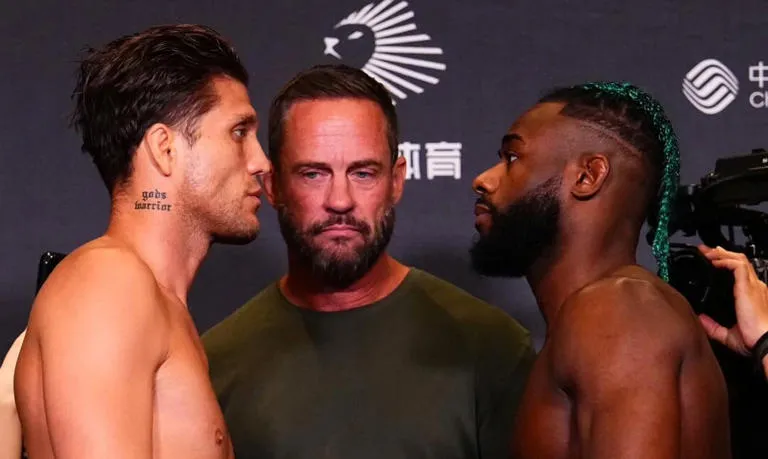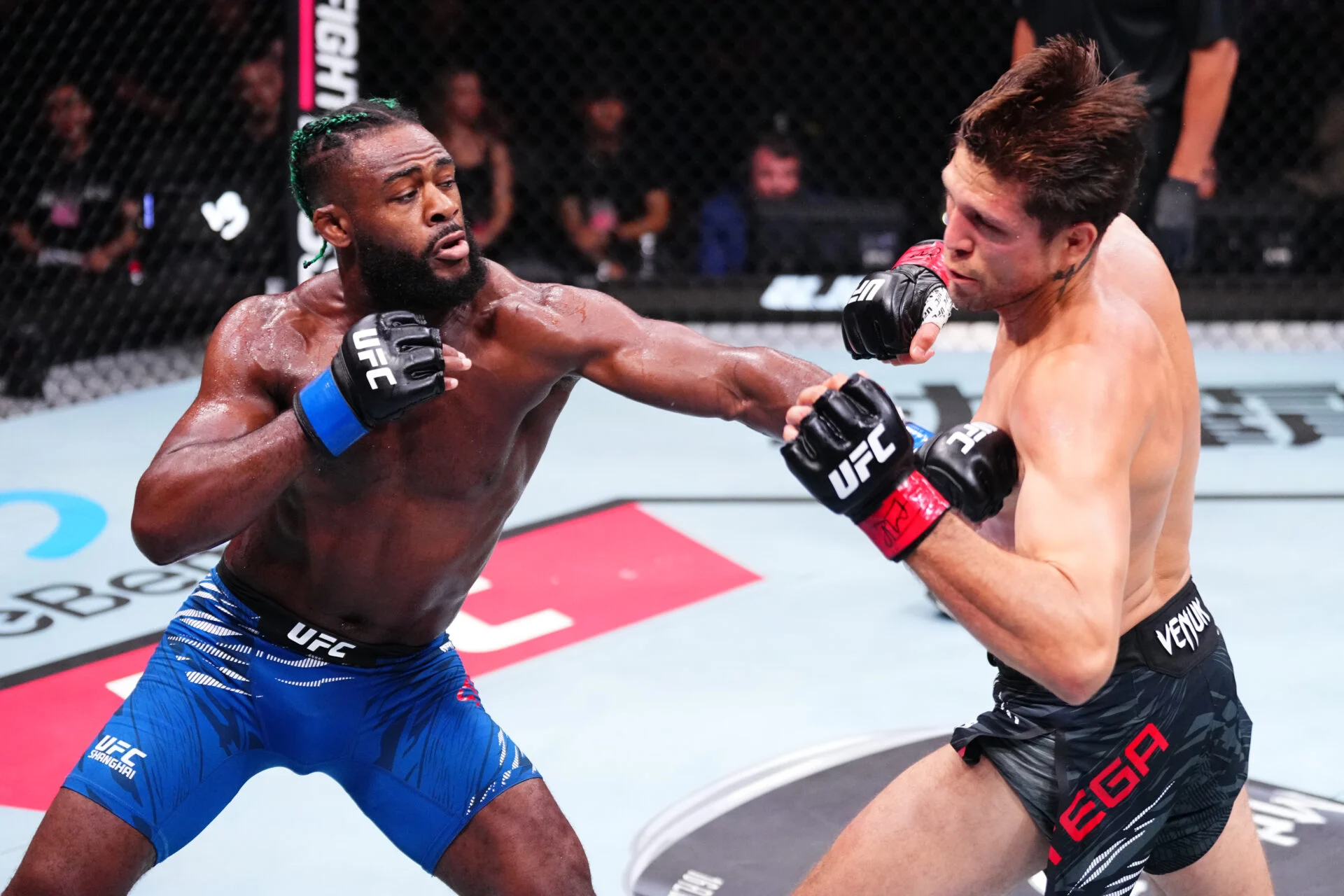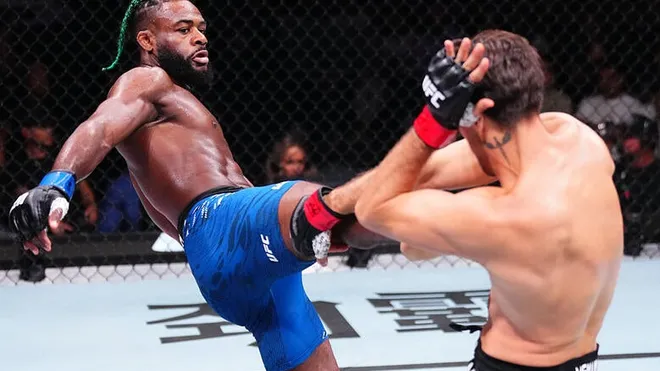

Ortega lands all his deadly blows, but can’t beat Sterling’s ultimate blow – Here’s why
When Brian Ortega threw everything in his arsenal — the submissions, the striking, the relentless pressure — few expected Aljamain Sterling to survive, let alone thrive. Yet, in the chaos of Ortega’s lethal attacks, Sterling answered with a single, decisive technique that shifted the entire fight. Was it pure strategy, years of preparation, or something deeper in Sterling’s mindset that made the difference? The answer reveals more than just fight tactics — it uncovers the very essence of what separates great fighters from legends.
The Battle That Shocked UFC Fans
The UFC is no stranger to drama, but few fights have generated the same level of intrigue and analysis as the clash between Brian Ortega and Aljamain Sterling. Marketed as a high-stakes matchup that could reshape the featherweight division, the fight delivered on intensity, grit, and suspense. Ortega came into the Octagon with his signature arsenal of lethal moves — submissions, precise striking, and relentless pressure. Yet, despite unleashing everything in his playbook, it was Sterling who walked away with the victory, relying on one ultimate technique that proved decisive.

Why did Ortega’s well-rounded game fail against Sterling’s seemingly simple but effective response? Why was Sterling’s singular “ace up his sleeve” enough to neutralize a storm of attacks? The answer lies in strategy, preparation, and the ability to execute under pressure. This article dives deep into the details of the fight, the psychology behind Sterling’s approach, and the broader implications for the future of both fighters.
Brian Ortega: The Warrior with Endless Weapons
Brian “T-City” Ortega has built his career on being one of the most versatile and dangerous fighters in the UFC. Known for his Brazilian Jiu-Jitsu mastery, Ortega has finished opponents with submissions that seem to come out of nowhere. His guillotine choke is feared, his triangle is legendary, and his resilience has made him a fan favorite. Add to that an improved striking arsenal, and Ortega is never a one-dimensional fighter.
In this fight, Ortega came prepared to overwhelm Sterling. From the opening bell, he pushed the pace, mixing boxing combinations with takedown attempts. He was relentless in his attacks, throwing high kicks, body shots, and even setting up submission traps in scrambles. For fans watching live, it felt like Ortega was dictating the tempo, forcing Sterling into uncomfortable positions.
Yet, for all the action Ortega produced, the breakthrough never came. Each attempt to secure dominance was met with a calm, calculated response from Sterling. This wasn’t just survival; it was part of a larger plan.
Aljamain Sterling: The Master of Strategy
Sterling’s reputation has often been polarizing. Some fans see him as an opportunist, others as a tactical genius. But one thing is undeniable: Sterling understands the game of MMA as a chess match. Against Ortega, he knew that trying to match chaos with chaos would play into his opponent’s strengths. Instead, Sterling relied on a single ultimate technique — his ability to control distance, disrupt rhythm, and time his counterattacks.
That ultimate technique? The clinch-to-control transition. Every time Ortega attempted to close distance or secure a dominant position, Sterling turned the exchanges into clinches, nullifying Ortega’s submission attempts and slowing down his striking volume. From there, Sterling dictated the fight’s rhythm, forcing Ortega to expend energy without meaningful payoff.
By focusing on this single approach, Sterling simplified the chaos of Ortega’s offense. He didn’t need to outstrike Ortega shot-for-shot or out-grapple him submission-for-submission. He just needed to use one consistent weapon to tilt the fight in his favor.
The Psychology of Simplicity
Why did Sterling’s “one move” strategy work so effectively against a fighter as dangerous as Ortega? The answer lies in the psychology of fighting.
Fighters like Ortega thrive on unpredictability. They create chaos, forcing opponents to make split-second decisions in high-risk scenarios. But when an opponent refuses to play into that chaos and instead simplifies the fight into one controllable aspect, the advantage shifts.
Sterling’s clinch work didn’t just neutralize Ortega’s submissions — it also frustrated him. Every time Ortega tried to set up a submission, Sterling broke the momentum. Every time Ortega looked for space to strike, Sterling smothered him. Over time, this drained Ortega’s energy and forced him into a reactive mindset rather than an offensive one.
Technical Breakdown: Ortega’s Arsenal vs. Sterling’s Answer

Ortega’s Attacks
-
Striking Pressure – Ortega launched combinations, mixing head shots with body attacks. His jab and overhand right aimed to push Sterling backward.
-
Submission Threats – True to form, Ortega attempted multiple submissions in scrambles, including a guillotine setup in the second round.
-
Kicks – High kicks and leg kicks to disrupt Sterling’s balance.
Sterling’s Counter
-
Distance Management – Sterling’s footwork prevented Ortega from landing clean shots, keeping him just out of range.
-
Clinch Control – By tying Ortega up in clinches, Sterling shut down the submission chains and forced Ortega to reset.
-
Selective Counterstrikes – Instead of volume, Sterling chose precision, landing clean shots after Ortega overextended.
This technical chess match highlighted the difference between variety and efficiency. Ortega had more tools, but Sterling’s focused execution proved more effective.
Why the One Technique Worked: Energy Efficiency
MMA is not just about skill but about energy management. Ortega’s wide array of attacks required significant stamina. Every failed submission attempt cost him oxygen. Every missed strike drained his gas tank. Meanwhile, Sterling’s single-minded focus on control allowed him to conserve energy, waiting for the right moments to strike.
By the championship rounds, Ortega was visibly slower. His strikes lacked snap, his takedown attempts became telegraphed, and his submissions lacked the explosiveness they had earlier. Sterling, however, remained composed, using his ultimate technique to ride out the storm and seal the fight.
The Broader Implications: Lessons for MMA Fighters
This fight is a perfect case study in why less can sometimes be more in MMA. Fighters often believe that the more weapons they have, the greater their chances of victory. While versatility is crucial, effectiveness often comes down to execution. Sterling’s strategy showed that focusing on one ultimate technique — and executing it perfectly — can defeat even the most versatile opponent.
For Ortega, this loss highlights a recurring issue: over-reliance on creating chaos. While his skills are undeniable, he sometimes fails to adjust when faced with opponents who refuse to engage on his terms. The path forward for Ortega may involve refining his ability to adapt mid-fight rather than doubling down on his arsenal.
Historical Parallels: Other Fights Where Simplicity Won
This dynamic is not new in MMA. History is filled with examples where one focused strategy defeated a more versatile arsenal:
-
Georges St-Pierre vs. BJ Penn (UFC 94) – GSP’s jab neutralized Penn’s boxing and forced him into defensive mode.
-
Khabib Nurmagomedov vs. Conor McGregor (UFC 229) – Khabib’s relentless grappling overwhelmed McGregor’s striking arsenal.
-
Anderson Silva vs. Forrest Griffin (UFC 101) – Silva’s counterpunching dismantled Griffin’s aggression with clinical efficiency.
Sterling’s win over Ortega fits into this lineage, reminding fans and fighters alike that mastery of one weapon can be more powerful than a scattered arsenal.
Fan Reactions: Controversy and Debate

The fight immediately sparked debates online. Some fans criticized Sterling’s approach as “boring,” arguing that he stalled rather than fought. Others praised his brilliance, noting that fights are about winning, not entertaining. This polarization has always followed Sterling, but in this fight, it underlined his identity as a fighter who prioritizes strategy over spectacle.
For Ortega, fans admired his warrior spirit. Even in defeat, his willingness to throw everything he had into the fight earned him respect. But many also questioned whether his style, while entertaining, can consistently win against elite-level strategists.
Conclusion: The Power of One
Brian Ortega may have unleashed his full arsenal, but Aljamain Sterling proved that sometimes one ultimate technique, executed with precision, is enough to win. This fight was not just about skills but about strategy, psychology, and efficiency. Ortega fought with heart and fire, but Sterling fought with calculation and control. In the end, it was the simplicity of Sterling’s approach that triumphed over Ortega’s complexity.
For fighters, fans, and analysts, the lesson is clear: you don’t need a thousand weapons to win a war — sometimes, you just need the right one.


















